2S 2A LiIon charger TS-1084S
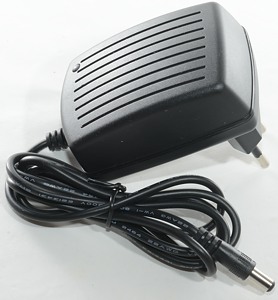
Official specifications:
- Input: 110-240Vac 60/60Hz
- Output: 8.4V 2000mA DC
This charger is for battery packs with 2S2P (2 in series 2 in parallel), 2S3P or more parallel LiIon cells. The battery pack is supposed to contains its own protection and balancing.
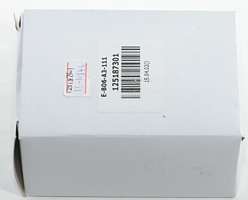
I got the charger in a simple cardboard box.
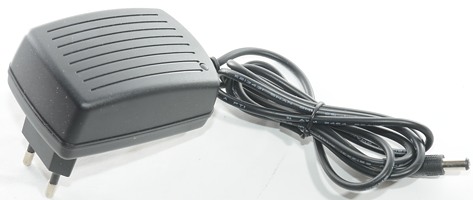
Contents was just the charger, no manual or anything else.
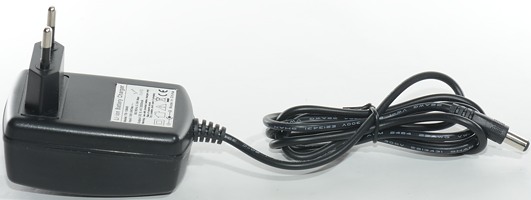
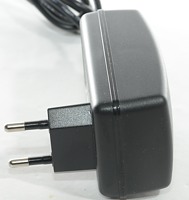

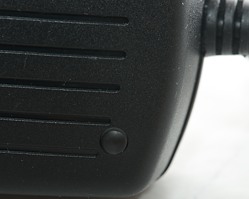
The led is a two color led, it will show red when charging and green at all other times when the charger is powered.
Measurements
- Connector is 5.5mm/2.1mm
- Idle power consumption: 0.36 watt
- Unloaded voltage 8.67 volt
- Short circuit protection is active until 3.2 volt.
- Led stays off when only connected to a battery, but not mains.
- Green led is on when connected to mains, but not a battery.
Testing with 4 cells means a 2S2P pack.
.png)
The charge curve is a CC/CV, but the charger voltage is way to high and the charger never stops, it just reports battery full (Green led) and continues to charge.
%20Efficiency.png)
Same curve as above, I have just replaced capacity with efficiency, it is at about 75% during charge.
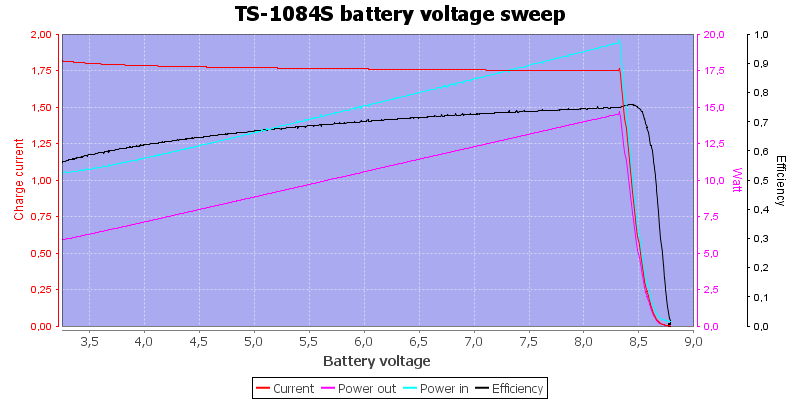
In the above curve I simulated a battery voltage from over discharge to fully charged. The charger is good at maintaining a constant current, but the end voltage is to high.
During a charge I took IR photos at regular intervals of the hottest part of the charger:

M1: 68,4°C, M2: 57,2°C, M3: 42,1°C, HS1: 70,4°C
HS1 is the transformer and M1 is the rectifier diode.
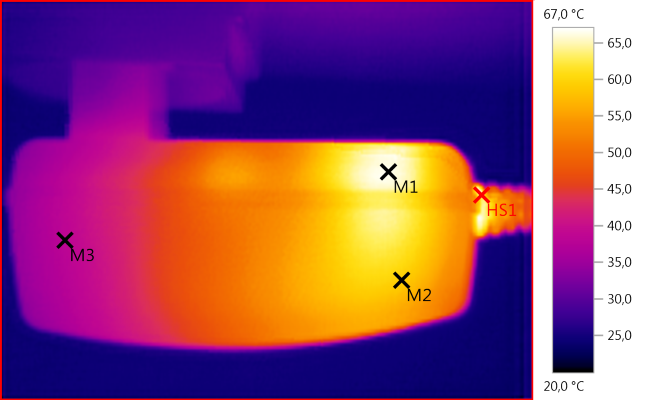
M1: 66,3°C, M2: 59,2°C, M3: 38,4°C, HS1: 67,0°C
M1 is the rectifier diode.
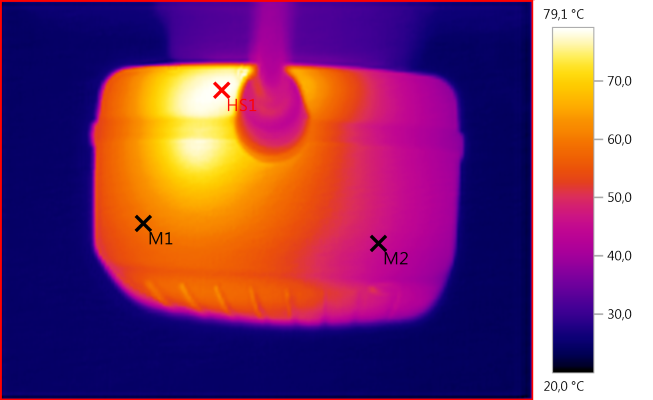
M1: 58,8°C, M2: 45,9°C, HS1: 79,1°C
HS1 is the second rectifier diode.
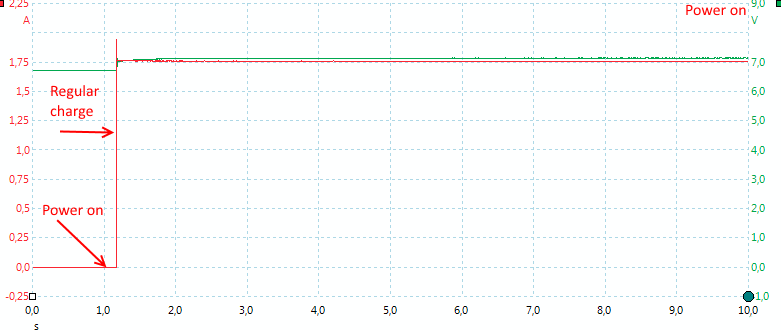
The charger starts fast and charges with a steady current.
Tear down
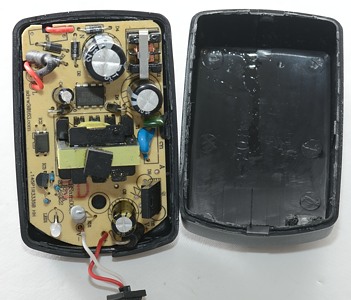
As usual the charger could be opened by putting some pressure on it.

Being a battery charger and not only a usb charger it needs a bit more parts on the low voltage side.
At the mains input it has a fuse, bridge rectifier (4 diodes), capacitor and a common mode coil. There is also the switch mode controller and optical feed back.
The large resistor at the output (RS1) is used to measure the current, increasing it will decrease the charge current (Decreasing it may melt the charger).
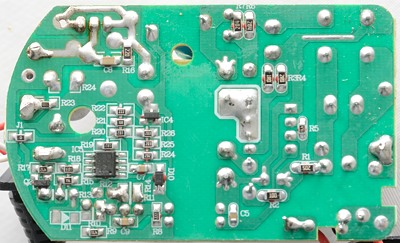
On the other side of the circuit board is the charge controller, it uses the optical feedback to control the charge current with good efficiency.
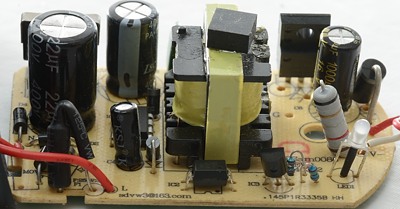
IC2 is the optical feedback.
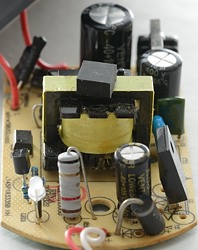
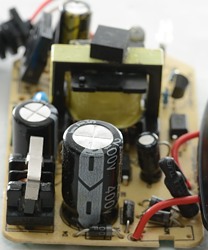
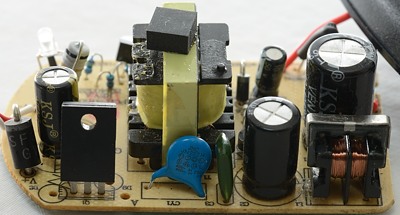
There is one strange detail, it looks like the charger uses two diodes in series on the low volt side. One is Q1, the other do not have a number.
Some reasons for the second diode can be:
1) A way to get some power for the electronic.
2) Reverse polarity protection.
3) Low battery discharge current when not powered.
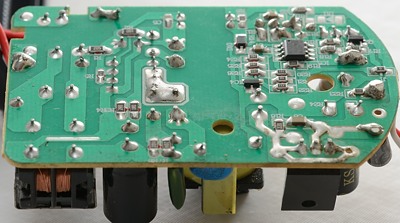
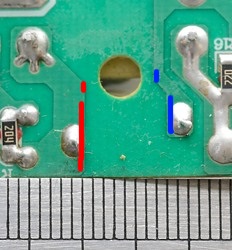
There is good isolation distance on the circuit board, the hole is no accident but is used to increase the isolation distance at that point (On circuit board required distance is 6.4mm, but it is only 4mm in air).
Testing with 2500 volt and 5000 volt between mains and low volt side, did not show any safety problems.
Conclusion
This type of charger is not nearly as advanced as single cell chargers. With only two wires to the battery pack it is impossible to do any balancing, but there is nothing to prevent it from using the correct voltage and stop when charging is finished. The 2A specification is a bit optimistic, the curves shows it is around 1.75A.
Due to the high voltage I will not recommend using this charger
Notes
The manufacturer has promised to fix the over voltage.
The charger is from ShenZhen TengShun Power Supply Co.,Ltd, I got it with the help of BLF/MTBR user Ledoman.
Here is an explanation on how I did the above charge curves: How do I test a charger







.png)
%20Efficiency.png)













